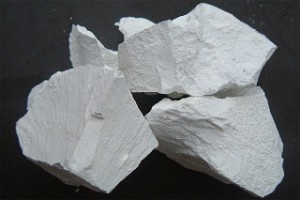Geoengineering with Calcium Oxide

We have years, not decades, to keep ocean pH from dropping below 8.0, where extinctions are guaranteed. Ocean warming already makes that even more difficult because it aggravates the effect of pH drop.
Those life forms do ~1B tons of CO2 sequestration per year by themselves — more than any other process anywhere.
Food chains in the sea are what we must protect, and soon.
Since limestone is ~50% lime, while basalt is ~10% such, then we’d need to mine, crush & transport ~5x the amount of basalt as limestone, and we’d likely have to do more, since basalt is ~90% other chemicals, which may be dangerous to dump into seas. That can only be determined by marine biologists.
Sequestering the CO2 from lime making is already necessary, since cement plants simply dump CO2 into air. So CO2 sequestration from all sources is something receiving research now.
The 100% pure lime coming out of a nuclear-powered kiln will need the same sequestration for its companion CO2, but we get 10x the pH protection from each ton of that vs a ton of crushed basalt.
And, instead of finding ~10 cubic miles of limestone each year to process, we’d need >50 cubic miles of basalt each year to be mined/crushed, and likely even chemically treated to remove dangerous compounds before dumping into seas.

In situ CO2 sequestration in Olivine might be a better option.
The scenario described above would require huge amounts of nuclear or renewable power to be diverted from direct use to sequestration processes – where it would be more logical to simply displace the fossil fueled plant.
i.e. The amount of CO2 released in making lime to sequester CO2 is more than would be absorbed by the lime! so doubling the amount of CO2 needing to be sequestered.
In the Olivine scenario – the rock inherently has the capacity to react with CO2 without having to have CO2 driven off first!
olivine comprises a very large proportion of the Earth’s crust and plays a natural role in absorbing CO2 by erosion.
In the linked paper,
http://www.ldeo.columbia.edu/gpg/projects/carbon-sequestration
it is suggested that Olivine can best be used for sequestration in situ by drilling and fracturing the rock then pumping either pure CO2 of carbonated sea water through it rather than mining and crushing the rock.
In an ideal scenario, the CO2 or carbonated water would be injected into deep rocks where geological processes raise the rock to an optimum temperature of 185 centigrade (Where the carbonation reaction occurs fastest.)
Carbonation of Olivine is exothermic helping to maintain the temperature of the rocks, and results in an increase in rock volume which will tend to crack the rock.
This raises some interesting possibilities
1. Geothermal power with CO2 sequestration.
Carbonated water could be used as the circulating fluid in a geothermal power plant extracting heat from the rock – with loss of CO2 in the process providing sequestration, replacement of a proportion of the heat being extracted, and further fracturing of the rock by physical expansion helping to keep the heat exchanger open. After each pass through the generator, the water would be recarbonated acting as a net carbon sink.
2. Strategic rock expansion – helping to lift coastal land at risk of flooding, and helping it to stay above sea level. (Rather similar to the approach of Venice’s engineers where they are seeking to refill the aquefers under the city and so reverse the sinking which has previously occurred.)
” We have years, not decades”
While the impact of humans on the oceans is significant, and in some cases deplorable, this sort of alarmist proposition isn’t supported by any significant research.
Grandiose schemes involving vast amounts of public money, always attract the idealistic and simplistic.Good propaganda, but without any practical logic.
The oceans, and atmosphere would be better helped by less grandiose, but more practical action.
1) The abolition of ships rigged to use Marine grade No.6 fuel (bunker oil). (the world largest single source of toxic pollution and certainly the largest oceanic pollutant) would make a good start.
2) Over fishing and the problems associated with long line drift nets needs to be addressed, especially with the rise of Asian demand for seafood.
3) Identifying and removing large concentrations of rubbish, that make up virtual floating islands, particularly in the Pacific and Indian oceans.
These are issues for which the technology already exists, and only lacks the political will to implement. The extinction of any species, is sad to human sensibility, but species extinctions have been occurring since life began on the planet. The planet is not a museum or sort of zoo, where humans can maintain an indefinite status quo and hold the planet in a sort of ideologically selected stasis. The planet, climate and all life forms are in a continual state of change, evolution, and extinction.